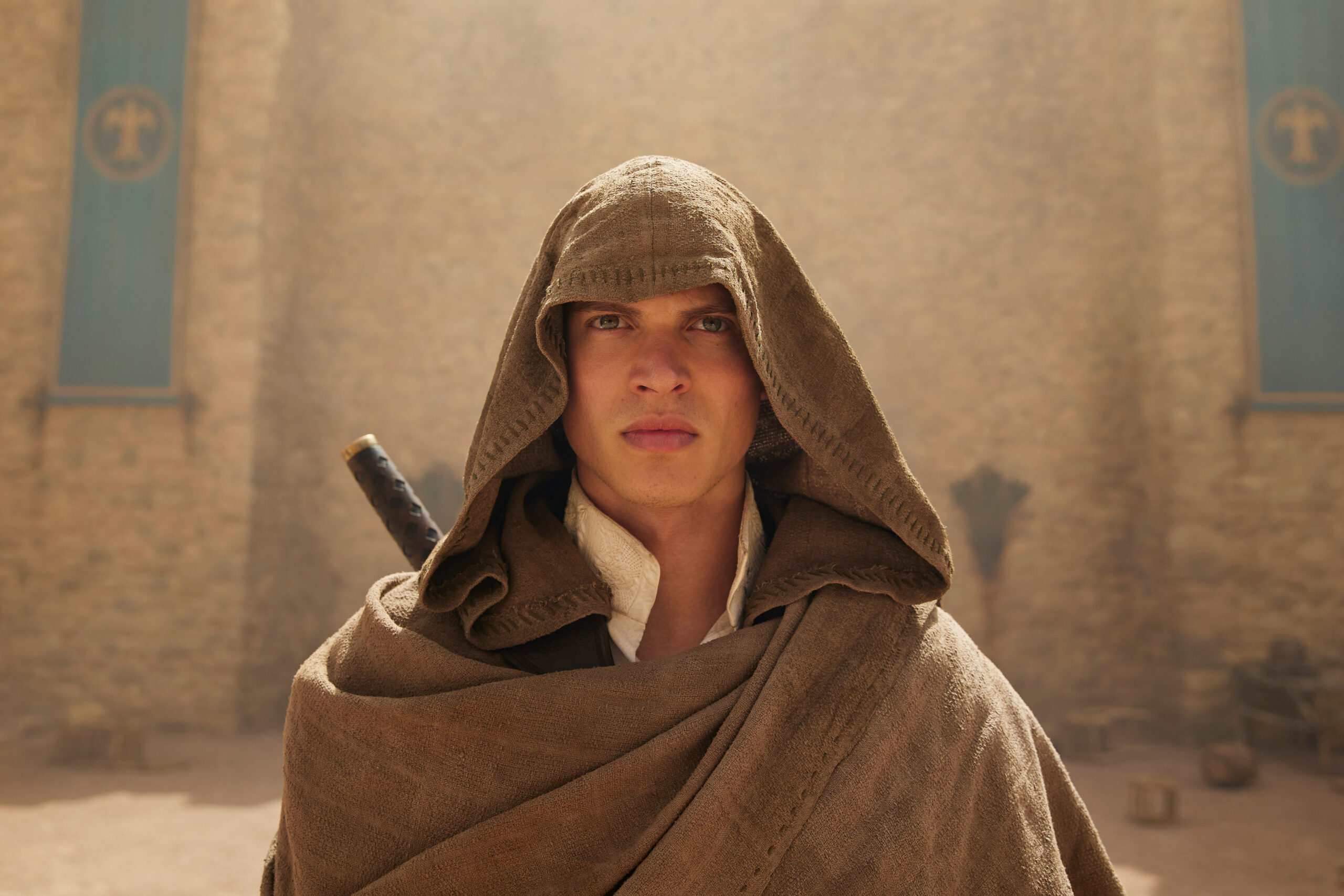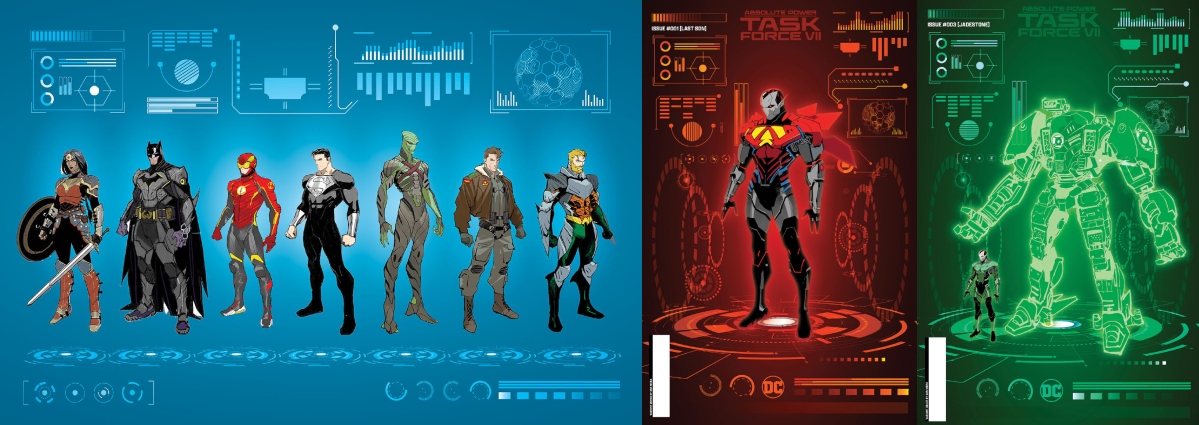![]()
After years directing animated movies for Blue Sky Films–the original Ice Age, Robots and Epic were three of his movies–Chris Wedge decided to follow the route of many animation directors before him and do a live action movie.
Along came Monster Trucks, possibly one of the simplest high concept premises ever turned into a film, and Wedge somehow found a way to use that idea to put a twist on the “boy and his car†movie that was done so well in Michael Bay’s original Transformers movie.
It stars Lucas Till (MacGyver) as Tripp, an outsider in his North Dakota town, who spends his time at the garage working on a beat-up pick-up truck that just needs an engine. When an explosion at a nearby oil drilling site unleashes a creature that lives under the earth, its quest for life-sustaining oil leads it to Tripp’s garage and a comfy home within his truck. Tripp soon learns that the creature can take the place of an engine and hence… Monster Trucks.
Soon, Tripp and his tutor (Jane Levy) are on the run from the Terravex Oil Company, who want to get rid of “Creech†(as Tripp calls him) and any evidence of the creature’s existence. Terravex scientist (Thomas Lennon) has mixed feelings about destroying a new form of life, so he helps them as well.
Monster Trucks is a movie that’s been almost immediately dismissed since it was first announced, because it seemed like such a simple and silly premise, but actually, it’s a fun family-friendly movie in the vein of Steven Spielberg’s E.T. the Extraterrestrial with great truck-racing action ala the aforementioned Transformers. In other words, Wedge has created a film that does exactly what it’s meant to do… entertain. It’s also an amazing film in the way it integrates live action and CG animation so flawlessly and (seemingly) effortlessly.
LRM got on the phone with Wedge yesterday to talk to him about his movie.
LRM: How did you get involved with this one? I’m sure you get that question a lot, since you have spent so much time in the world of animation. I assume most animators are interested in working on live action movies eventually. What was your impetus to take this one on?
Chris Wedge: I had wanted to make a live action movie for a long time, and I had developed and I have continued to develop quite a bit of stuff. This is an opportunity that just came to me and I thought the idea was so out there, just so gigantic and fun and silly, that I could turn it into something extremely original. I took it as a great fun, creative challenge, and Paramount let me do a lot that I wanted to do with it. It was a lot of fun.
![]()
LRM: Cool. How developed was it when you came on board? Had they already come up with the script, or was it just the idea and the general premise?
Wedge: It was an idea that they brought to me, and at first, I didn’t get it, and they … They pitched some ideas to me, basically, and I think they’d written a script. I thought about it for a while, actually I was in post-production on Epic, and … Months later … an idea for the movie just fell into my head, one that I thought made sense, and so I took it back to them and they liked it. That’s pretty much what we made.
LRM: I’m not sure if it’s true, but there are rumors that the original idea came from someone’s kid. Some kid said, “Hey, monsters, trucks, put ’em together.†Is that true?
Wedge: Adam Goodman, who was the head of Paramount at the time and brought the idea to me, had a young son at the time. All of this started showing up on the internet over the last couple of weeks. Nobody ever told me that it was his son’s idea. I think Adam was looking for ways to get more into the family area, and they were starting up an animation division there. This was always designed as a hybrid. Actually, maybe this idea, at first, was in their animation division, and then they decided to try it as a hybrid. I never had any story discussions with any four year-olds on the project, no. If the idea did come from a four year-old, that’s fine with me, because the whole notion behind the movie is that it should be the kind of fun you want to have when you’re a kid.
LRM: Okay, I wasn’t sure. It’s a great idea, wherever it came from.
Wedge: I don’t think there have been many movies like this one out there since Amblin was making movies in the ’80s and Joe Dante was making movies, and there was this big, fun adventures where kids are in the middle of a story and they’re doing something righteous. They know more than the adults do, and you’re rooting for them. That was the idea.
LRM: Did it take a lot of time to figure out how to integrate the live action trucks with CG and make the concept work? What was some of the development phase, as far as that goes?
Wedge: These days the technical issues aren’t the biggest problem, and they never have been, really. It’s always story–figuring out how to make it work. I was challenged more by figuring out how to tell the story, how to conceptually introduce a creature that needed help and could fit into a truck in an original, surprising way, and to come up with the tone of the relationship between these two characters, the needs that we perceive in both of them and why they fit together. When it came to making the movie, I was constantly surprised by the nonchalance with which the effects crew went and took whatever we photographed and integrated the animation into it. We would be on a set that required a lot of integration, and while we were shooting, I’d ask, “Don’t you need some kind of crazy technology here? Some repeatable camera move or something?†They just said, “No, we’ll track it,” and we would hand-hold the camera and cut together whatever we wanted to, and send then the background plates, and they would come back with the first pass of animation.
LRM: It’s amazing that it’s gotten to that point where you can do that. Even 10 years ago, it was very tricky to incorporate live action and CG.
Wedge: Well, I’m sure it was very tricky and laborious; I’m just saying it was easy for me. They were willing to take on technical challenges that I wasn’t expecting.
![]()
LRM: What did you have on set for the actors to interact with? I assume there were some physical trucks, so did the animators just work around what you shot with the trucks?
Wedge: It depended on the scene. There was a big second unit effort on it. They shot for almost half the time we were shooting principal photography, and there was a big camera car effort. I think we built seven of Tripp’s truck, different versions of it for driving or towing, and they even made an animatronic version of the truck. It was all electric. You could drive down the road with a remote control in your hand. It could stand up and kneel and pick up wheels and shake around. It was pretty fun, but we had to do the big, big tricks. Actually, they did a lot of big tricks–flipping trucks and jumping them–but sometimes we had to create the whole truck with animation.
LRM: You also have the actors in the trucks as well. Was that just using some of the old-fashioned tricks of having them on a trailer or with moving backgrounds? Did they actually learn how to drive the trucks?
Wedge: Actually, it went a bunch of different ways. Yes, we shot some things on green screen and on giant motion platforms to bounce them around, and sometimes we had some drivers with wigs on and some clothes that matched our characters, but a lot of the time, we were towing the trucks in chase scenes. Say Tripp and Meredith, Lucas and Jane, would actually be in the truck, and we’d be towing it with a camera truck. We’d be in the middle of a chase. All the chase trucks were around, and things were crashing into each other and the streets of the city were going by. I wanted to make the whole thing look as realistic as I possible could. I wanted to ground it. We did as much practical photography as we could.
LRM: You’ve obviously worked with some great actors in your animated films, including the late, great Robin Williams. How different was it, working with actor on set as opposed to the recording studio? Was it that much different?
Wedge: I think actors feel much more comfortable when we’re shooting with a camera. That’s what they’re used to. When they’re in front of a microphone for animation, we’re just looking for a voice performance and it’s a little tricky. It takes most people a few sessions to settle in. On a set, where actors can interact with each other, it’s just more like life. The collaboration with the actors and camera and everybody on set was thrilling, to me. I really, really loved it. The actors just brought themselves and their performances to the thing. Everybody’s trying as hard as they can to make it right, so it was really a thrilling, creative collaboration.
LRM: You also got Amy Ryan to play Tripp’s mother. I was really surprised that she was only in a couple of scenes. Was there more stuff with her that just didn’t make it into the movie?
Wedge: No, I love Amy, too; that’s why I cast her. Yes, there was more material to shoot, but as a lot of these things go, the movie found another direction as we were cutting it. Some of those other scenes weren’t pushing the story as much as I wanted them too. It’s not because of Amy at all, it was just because of what those scenes meant in the movie. That’s the best explanation I can have. Actually, I had to cut maybe my favorite scene in the movie; I had to cut it just because I understood that the audience didn’t need it. The story didn’t need it, as much as I loved it, so you can see that on the DVD extras.
![]()
LRM: That’s a shame. I also want to ask about the process of designing Creech. He’s sort of a cross between a shark and an octopus, which are two elements kids can relate to and identify. How hard was it coming up with that design for him?
Wedge: I thought about what I told you, the concept for the movie—when Adam brought it to me–I thought was silly, and I didn’t think I was interested when I first heard of it. Then I thought about it for a little while and the notion that a creature is pulled from its own world and is extremely vulnerable in our world is what got me hooked on it, that he needed Tripp, and he needed this truck shell, as a way to get around in our world. It was a thing that protected him and hid … Hid him and protected him, and also made it so that he could move in unbelievable ways, in our world. He needs the truck to survive, that was the whole idea. When we were designing the creature, I wanted something vulnerable. I found some footage of an octopus that had been pulled onto the deck of a fishing boat, like a six or eight foot octopus. When an octopus is out of the water, it can almost do nothing. It’s this slimy thing that can flop around, it can’t get any purchase, it can’t move, it can’t move quickly, but it can slither through thin spaces. It just seemed to me like this is the kind of goopy, sinuous, but powerful in its own way, creature that could crawl up into all the nooks and crannies of a truck and really inhabit it, and make the truck … Take over the suspension, take over the propulsion of it and really make the truck move like its a character in and of itself. All the design of the creature came from those ideas, that it was a squishy, soft, vulnerable thing that needed this exoskeleton to move.
My first designs of it really looked ugly and melty, and then we caught onto the fact that it could look more like a sea mammal, like a walrus or a beluga whale or a porpoise, with these tentacles. That was a month’s long design process.
LRM: It worked out great. I really like the fact that this movie is all ages. Obviously it could have gone a different way. You could have made scarier movie. Why does making movies for a younger audience appeal to you, and why do you feel you’ve been so good at it with the movies you’ve done over the years?
Wedge: I don’t know. It might just be because I’m childish. It could be that the things I think of are the things I wanted to watch when I was a kid, and the things that make me feel good. I like to go to movies to feel good. I like it to be an emotional kind of release and opening. Maybe that’s why they end up being family. Monster Trucks was supposed to be scarier, and I wanted to … I was excited about it because they said, “Let’s go for a hard PG-13. Let’s go for something really intense, maybe something that competes in the Transformers‘ world,” but when we showed the first cut to a preview audience, it was too scary for kids. People walked out, people ran out. I used that experience to help tune it for everybody. It wasn’t difficult, but it made me understand that they’re not after scary, they’re after exciting. They’re after thrilling. I made this one for the audience, not for the critics, that’s for sure.
LRM: Are you still involved in doing animation at Blue Sky?
Wedge: Oh yeah, I’m in my office right now. I took a little sabbatical to do this.
LRM: Have you thought at all about what you want to do next? Are you always developing stuff over there?
Wedge: Yep, yep. I have a handful of projects that are animation and live action and hybrid. Just like everybody else, I’m just developing stuff right now and getting closer on some than on others. Excited about all of it.
Monster Trucks opens nationwide on Friday, January 20 with previews on Thursday night.

 FOR FANBOYS, BY FANBOYS
Have you checked out LRM Online’s official podcasts and videos on The Genreverse Podcast Network? Available on YouTube and all your favorite podcast apps, This multimedia empire includes The Daily CoG, Breaking Geek Radio: The Podcast, GeekScholars Movie News, Anime-Versal Review Podcast, and our Star Wars dedicated podcast The Cantina. Check it out by listening on all your favorite podcast apps, or watching on YouTube!
Subscribe on: Apple Podcasts | Spotify | SoundCloud | Stitcher | Google Play
FOR FANBOYS, BY FANBOYS
Have you checked out LRM Online’s official podcasts and videos on The Genreverse Podcast Network? Available on YouTube and all your favorite podcast apps, This multimedia empire includes The Daily CoG, Breaking Geek Radio: The Podcast, GeekScholars Movie News, Anime-Versal Review Podcast, and our Star Wars dedicated podcast The Cantina. Check it out by listening on all your favorite podcast apps, or watching on YouTube!
Subscribe on: Apple Podcasts | Spotify | SoundCloud | Stitcher | Google Play



